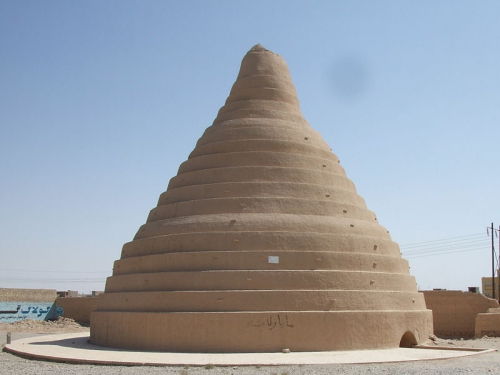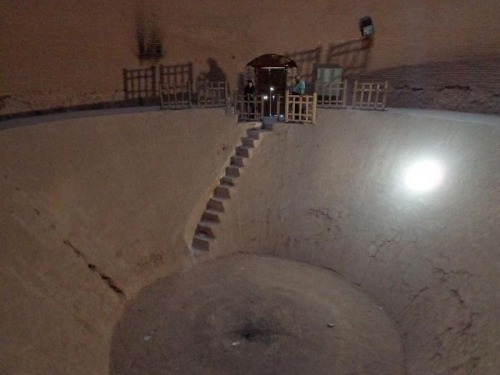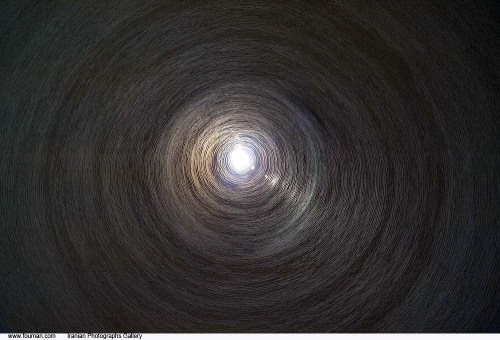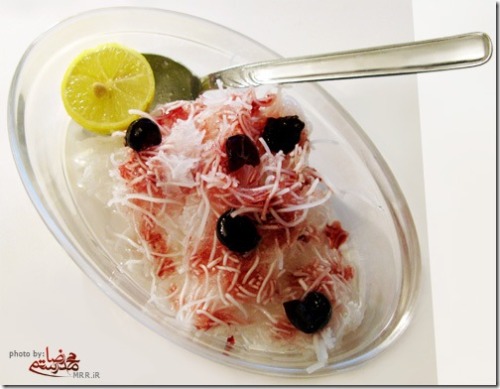peashooter85:sapper-in-the-wire:peashooter85:Ancient Persian Freezers — The YakhchalsToday in the mo
peashooter85:sapper-in-the-wire:peashooter85:Ancient Persian Freezers — The YakhchalsToday in the modern world we take freezers, and the frozen results of freezers for granted. But in ancient times, cold drinks, frozen desserts, and chilled tropical cocktails were a luxury unknown to most people. However the idea of artificially freezing goods is nothing new. As far back as 400 BC, the ancient Persians built special freezers called yakhchals. Yakhchals were large buildings used for storage of ice and foodstuffs during the hot Persian summers. Typically they were around 60 feet tall, and had a large subterranean storage space dug out from under it. The Yakhchal itself was made from a special type of mud clay called sarooj which was composed of clay, sand, lime, goat hair, egg whites, and ash mixed in a special proportion which made it extremely resistant to heat transfer. In other words the inside stayed cool, while heat from the outside was prevented from entering the building because of the thick insulated walls. This combined with the subterranean storage ensured that whatever goods were stored in the pit stayed cool, as temperatures below ground level are usually around the 60 to 65 degree Fahrenheit range. However, these designs were not what made a yakhchal a freezer. There was one other brilliant design feature which ensured that the yakhchal would stay frosty all year long.At the top of the dome was a small hole, or series of small holes called windcatchers. Typically windcatchers were pointed in the direction of the prevailing winds. Due to its conical shape there was always a negative pressure gradient inside the yakhchal. According to Bernoulli’s Law air flow at a high pressure will always move toward areas of low pressure. Thus air from the outside was constantly flowing through the yakhchal. In addition, according to Venturi’s Principal, whenever air flows through a small hole, the smaller the hole, the greater the speed of the flow. The small hole, or series of holes of the yakhchal ensured that air passed into it at great flows. What resulted was a great amount of outside air entering into the yakhchal at high speeds. While the air itself wasn’t cool, the flows at which it was being entrained into the yakhchal created temperatures that were below freezing. Typically the windcatchers were cut in such a way that the incoming jet of air would be directed onto the storage pit.The ancient Persians primarily used their yakhchals for storing ice and foodstuffs. During the summer, Persian nobles often enjoyed a refreshing frozen treat called faloodeh (pictured above), which is made from thin noodles with syrup made from sugar and rose water, then flavored with lemon, lime, fruits, almond, pistachio, and other flavorings. Due to the Persian’s freezing technology, faloodeh (which is still popular today) goes down in history as one of the first frozen desserts. The practice of building and using yakhchals continued up to the 20th century, when they were eventually replaced with modern freezers and refrigerators.That’s not how a yakhchal works. You can’t get freezing temperatures just by using venturis, lol. All you’d have to do then is drill some holes in your wall and then you’d get a cold house. Yakhchals are sophisticated ice boxes. The ice itself comes from small channels that are placed near the yakhchals. The channels are fed from the underground qanat water supplies. The narrow, above ground channels are protected by high walls, which shield the channels from the sun and from the wind. During the freezing nights, ice would form, and before dawn, would be broken up into cubes and brought inside the Yakhchals. There is no windcatcher on yakhchals, at least the ones I have seen. The opening at the top just lets hot air escape, while the conical section helps keep cool air down (because if outside air flooded in too fast, it would just make the inside as hot as the outside). Likewise, there are no venturis. Forced cooling really doesn’t lower temperatures, that’s a major violation of the first law thermodynamics, but having wind blown over you makes you feel cooler through evaporative effects. i.e. a fan feels good on a hot day, but it’s not going to freeze water for you. I don’t blame you for messing up though, the sources on the internet for the yakhchal are terrible. They seem to be mixing windcatching towers, and qanat updraft cooling into yakhchals, when they’re actually distinct things.I stand corrected -- source link



